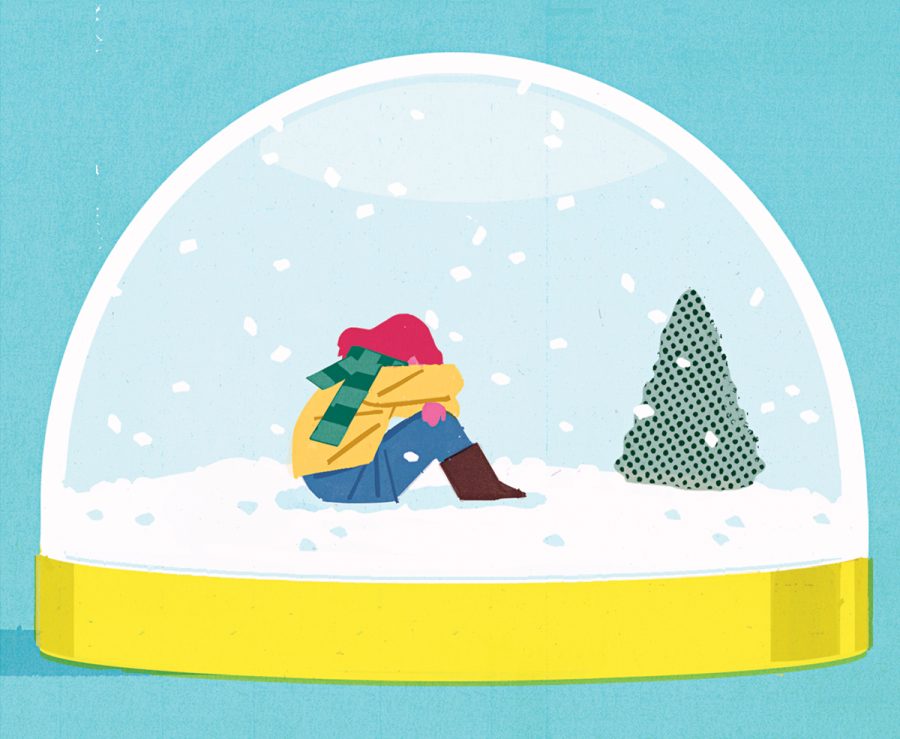What is seasonal affective disorder?
Courtesy of bostonmagazine.com
Seasonal affective disorder can cause people to feel unusually despondent and depressed as the winter months grow near and the days get shorter.
Winter is here and the dreary days have come. With these rainy and gloomy days, for many, comes the overwhelming feeling of dread, sadness and hopelessness. While these feelings might be a direct result of the somber days — they are also, in fact, symptoms of the seasonal affective disorder, otherwise known as SAD.
Today, when someone is feeling unusually despondent, society instinctively believes it to be depression, anxiety, or a common mood disorder. What people aren’t aware of is that seasonal affective disorder (SAD) is considered a mood disorder and that it affects approximately 10 million Americans, according to Psychology Today.
For students everywhere, it is important to acknowledge that being swamped with feelings of stress is not always an immediate sign of a mental illness, despite the fact that there is always a strong possibility. According to Julia Chan (‘23), an officer for the Bring Change to Mind club that focuses on eliminating stigma surrounding mental health, “students have a pretty basic understanding of what [seasonal affective disorder] is… but I don’t think people understand how [they] get it or why.”
The most basic definition of SAD concludes that it is a mood disorder that affects people where there is a limited amount of sunlight. As the winter months close in and the sun sets earlier and earlier, our circadian rhythm — the body’s biological clock — may be disrupted, which can lead to feelings of depression and hopelessness. Furthermore, it is commonly believed that being exposed to direct sunlight triggers the release of serotonin, a hormone that stabilizes mood. In releasing this hormone, sunlight improves the mood levels within one’s body and helps to regulate emotions that are possibly overwhelming one’s life. With daylight savings ending on November 7th this year, we now have less hours of sunlight, causing the “winter blues”.
Seasonal affective disorder can significantly affect a person’s mood by causing anxiety, loneliness, sadness and discontent, loss of interest, lack of concentration, as well as mood swings. People with SAD may experience issues with sleeping, as well as feelings of fatigue and low energy. Furthermore, symptoms specific to winter-onset SAD — which sets in during the fall and continues through the winter months, usually fading by spring — include oversleeping, overeating and weight gain, and social withdrawal. Symptoms and signs of seasonal affective disorder should not be overlooked, since it can lead to complications including problems with school or work, other mental health disorders (such as eating disorders), substance abuse and suicidal thoughts or behavior.
Today, it is commonly accepted that students across the globe are working late into the night cramming for tests, studying, or simply trying to catch up on the excessive amount of homework and I am no exception. With darkness creeping into our lives and sunset sneaking up on us at as early as 4:30 PM, it is important for all students to get outside and get as much exposure to the sunlight as possible, to avoid the possibility of developing seasonal affective disorder. We need to work tirelessly to try to keep our mood levels stabilized and to develop a healthy routine throughout the school year. Understand that academics are not your entire life; you deserve to be happy and don’t let the dark hours defeat you.

Brielle Lampf is one of Eastside’s Editor-In-Chiefs for the 2022-2023 school year and she is currently a senior! You can always catch Brielle at an Interact...










